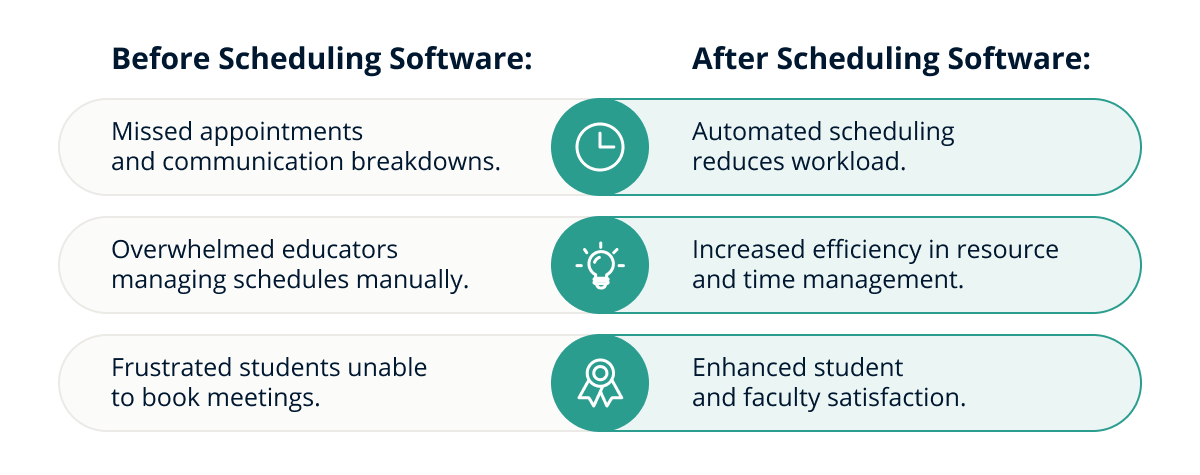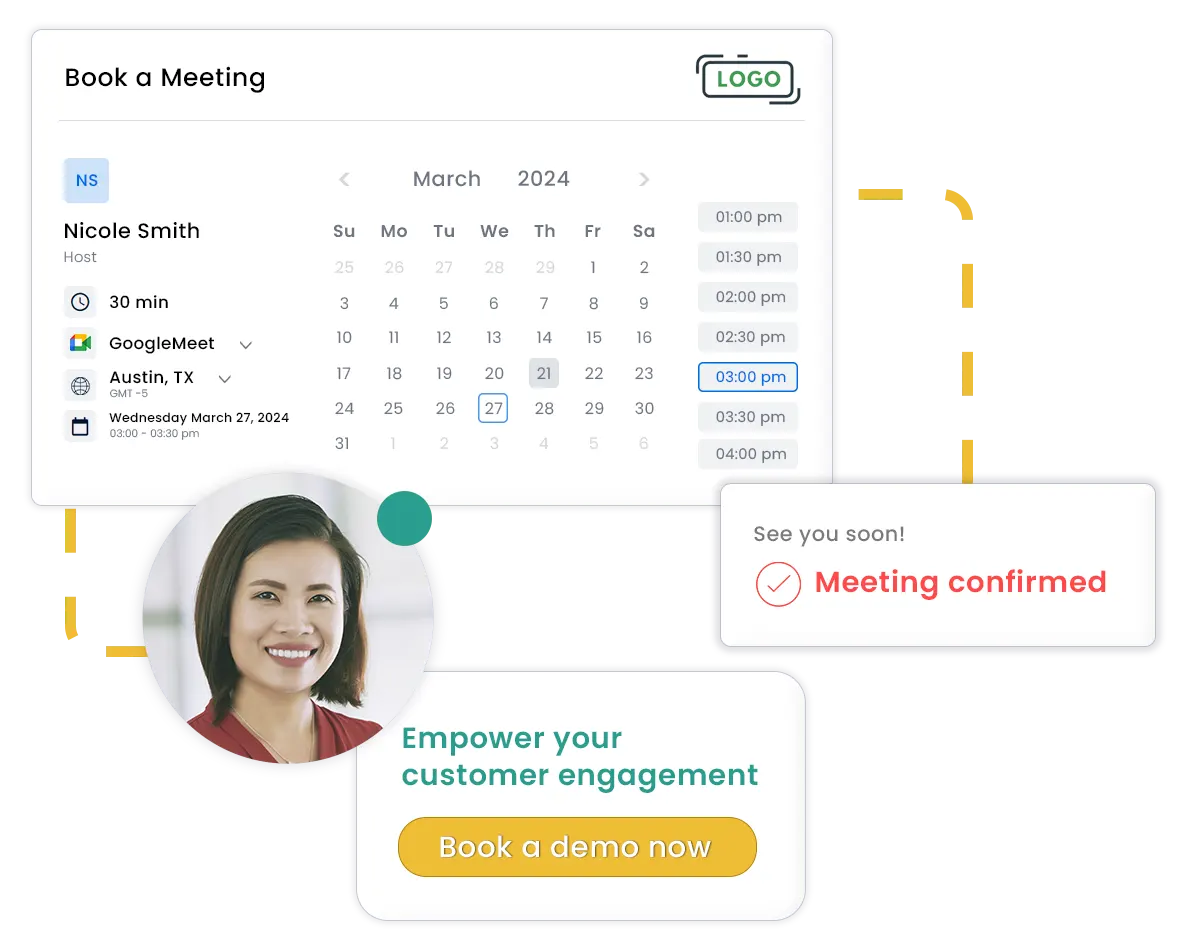“Technology and innovation aren’t going to slow down, and neither should education for the next generation.”
According to Valuates, Corporate EdTech is a $27.5 billion industry that is growing yearly, with companies such as Coursera, Chegg and Zoom becoming mainstays within the modern educational system. The rapid gamification of EdTech has allowed brands like Duolingo, Kahoot, and Apple Smartwatches to utilize adaptive learning algorithms and reach a larger audience, from universities, to corporations, and even government bodies.
In this article, we look at the most exciting innovation, trends and opportunities for businesses in EdTech, and how data-backed, modern scheduling software for education can simplify day-to-day tasks on every organizational level within a company.
What are the benefits of EdTech?
Whether you are an educator, school administrator, educational technology enthusiast, or simply an avid follower of growth in education, technology within education serves multiple benefits.
EdTech, in industries across the world:
- Increases the reach and scope of education across the globe
- Tailors the education for regional needs (ex: language, training)
- Improves access to education in rural areas
- Increases the potential of learning through gamification
- Promotes individual learning with immediate access
- Equips educators with efficient tools for student management
- Invites students to examine new areas of interest and growth
Moreover, EdTech allows seamless collaboration between educators and students, allowing them to bypass international borders, with many EdTech platforms and applications simply requiring a stable access to the internet.
But modern Education Technologies have gone beyond just the internet, with many incorporating Artificial Intelligence, machine learning to further develop their products.
Here are the 5 most prevalent trends in technology for 2023, and the bold innovations accompanying them.
5 Trends shaping EdTech in 2025
Virtual and Augmented Reality
According to a FutureEdTech survey, 85% of students love VR and AR experiences, and 73% believe these technologies increase their understanding of subjects. One of the most common ways of utilizing VR in education is via virtual reality classrooms, or immersive training sessions.

Artificial Intelligence
According to the EdTech Association, 92% of educators recognize the potential of AI in tailoring learning courses for individual students. This allows the student with personalized education material focusing on the individual’s weaknesses and strengths, while it provides the educator with time to appropriately analyze and suggest improvements.
Gamification for the #win
In a study conducted by the National Technical University, It was found that challenge-based gamification can improve student performance by 89.45% compared to lecture-based education. Take a look at how students move towards the gamified systems of brands like Duolingo, where they learn with virtual partners and view their personalized progress.
Remote Learning
70% of students say online learning is better than traditional classroom learning, and the trend is visible with market development. Estimates suggest that America’s online learning industry will be worth $687 billion by 2030, and businesses are taking notes. Zoom was the most used platform during the COVID19 pandemic for meetings, classes, and even government proceedings. It continues to lead the market.
Skilling and Mentorship
Online-education companies are expanding and emphasizing their enterprise offerings to meet the demand for upskilling and reskilling, according to McKinsey. For example, corporations such as Microsoft have created an ever-expanding database of products and white papers aimed towards providing clients with reliable skilling solutions.
What are the challenges for EdTech?
As with all technology, scale & size are not the only potential blockers..
With a rapidly evolving target audience, EdTech can both be revolutionizing the industry and playing catch up at a moment’s notice, as critical issues can hinder an EdTech’s growth, such as:
- Resistance to change within the market → which leads to slow adoption
- Slow rate of advancement in technology → that can cause delayed rollout
- Issues transferring solutions across touchpoints → which can alienate the audience
- The rise of Artificial Intelligence → that can cause the solutions to seem rushed
- Lack of User Experience data → which can negatively affect customer personas

And some of the most esteemed educational institutions have faced similar issues trying to modernize their organizational systems.
In March 2020, the President of Columbia University announced a new policy to shift student learning from in-person to online interactions with tutors and mentors.This unprecedented change initially faced pushback from students and tutors alike, and threatened to disrupt the entire organizational infrastructure.
The University of Kentucky stated that many students had to make multiple phone calls to schedule an appointment with their coaches. Frequently, students would be unable to contact them across multiple touchpoints (phone, email), leading to lapsed classes, frustration, and disgruntled clients.
Another educational institution faced time, space, and program constraints, which made it hard for the departments to prepare their schedules and ensure consistent progress, due to an outdated, manual system.
EdTech’s hidden helper: Scheduling Software
When there is a rise in digital technology used to facilitate learning, there is a need for time management. And where there is effective time management, there is scheduling software.
Modern technological solutions designed for education tend to focus on maximizing time efforts for clients, as seen with Duolingo and Kahoot. Interestingly, market research shows some impressive statistics regarding the use and objective success of scheduling softwares.
- Using an appointment scheduling software can lead to a 30% to 45% revenue increase, according to Yolantis.
- Forbes reports that 78% of customers are more likely to buy from a business if they receive customized services, something that scheduling software can deliver.
- Ultimately, GetApp summarizes that 94% of customers would be more likely to find a new business, especially if it has its own booking schedule website

How is SUMO Scheduler unique?
Our online appointment scheduling software automates record creation and maximizes performance.
With the state-of-the-art interface, and clever integration with AI, SUMO provides a 360-degree view of every appointment booked, which offers visibility into the entire scheduling process of a business.
Moreover, SUMO allows clients to book appointments at their leisure while guaranteeing that the meeting would take place at the correct time with the correct specialist that meets the specific needs of the customer.
Through Appointment Scheduling, organizations can automate tasks such as phone call reminders, email confirmations, SMS notifications, balancing all touchpoints.
Most importantly, SUMO is a Salesforce native tool, which means it is up-to-date with the latest technology, and can thus offer bespoke solutions to clients across the industry.
Get Started Today:
The Washington Center has managed to cut out the time-consuming and error-prone process of manual scheduling, improving customer engagement.
Columbia University has seen a dramatic increase in efficiency with manual tasks being eliminated across all departments.
The University of Kentucky improved appointment flow, and greatly streamlined the student’s (customer) experience.




